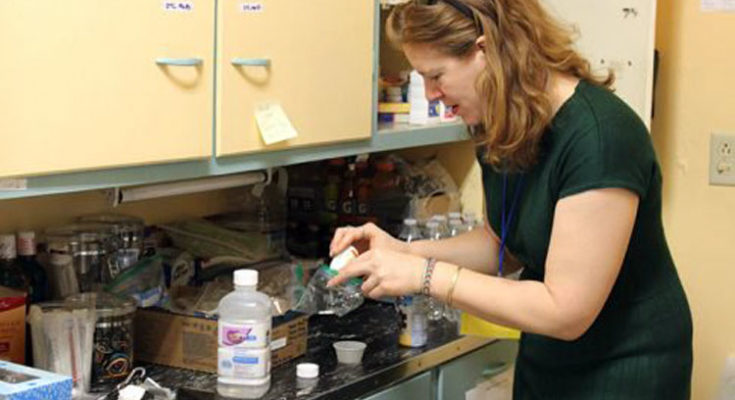File Photo by Nicole Ludden/Cronkite News
Medical education experts are looking at a rosy picture of the future. With technology and mindful changes, an immense transformation is on the horizon.
Several emerging innovations and societal developments are poised to reshape how future physicians are trained. This will require medical schools to adapt their curricula, teaching methods, and educational models to continue delivering top talent that can meet tomorrow’s healthcare needs.
Let’s take a look at some of these transformations and discuss the key trends that will impact medical learning in the coming years.
Globalization of Healthcare Education
Rapid globalization has opened doors to increased international university partnerships, student-faculty exchanges, and collaborative research and training programs. The diversity and inclusion drive has also expanded outreach to disadvantaged student groups worldwide.
This internationalization will lead to a culturally versatile global physician workforce adept at practicing medicine in varied societal contexts since students get to receive firsthand experience of region-specific population health challenges and innovations in healthcare education and delivery models. Exposure to diverse cultural values, beliefs, practices, and health behaviors will also make medical students effective cultural mediators, improving healthcare equity and access. Ongoing global interactions will catalyze the exchange of best practices to advance medical education internationally.
If you’re pursuing a medical career abroad, study how the system works in your chosen destination. For instance, you can check the Caribbean med school pros and cons if you’re eying that location before deciding to go there for your studies.
Impact of Emerging Technologies
Digital health technologies like augmented reality, virtual reality, artificial intelligence (AI), telemedicine, and simulation pave the way for new pedagogical approaches. Immersive simulated environments, for instance, enable early clinical exposure and safe skills practice without real-world risks.
One can also expect AI-powered personalized and adaptive learning tools to offer customized education tailored to each student’s strengths, weaknesses, and pace of learning. In addition, telemedicine and global outreach opportunities are preparing future doctors to manage patient care remotely.
Ultimately, technology continues to increase self-directed and lifelong learning while transforming faculty roles toward coaching, mentoring, and coordinating roles.
Focus on Value-Based Care
While technology is beneficial, it is just one piece of the puzzle. There’s also a major shift toward aligning medical education with the emerging value-based care model.
A greater emphasis lies in training future physicians in principles of health equity, cultural competence, social determinants of health, population health management, health economics, and preventive care. These principles drive states to develop local programs, giving the healthcare sector a much-needed boost.
Curriculum revisions will inject public health perspectives to reinforce that a physician’s role expands beyond clinical medicine to optimize health outcomes at lower costs. Assessment metrics will also evolve to gauge competence in evidence-based, cost-conscious, coordinated, and patient-centric care delivery. Such training will equip graduates to improve community health as team players in an integrated healthcare network seeking to triple these goals.
Transition toward Competency-Based Curricula
Medical schools are progressively shifting from knowledge-based to competency-driven curricula. The emphasis is moving toward equipping students with a versatile skillset they can apply flexibly across diverse real-world situations.
Core competencies like clinical reasoning, communication, collaboration, management, and leadership are being integrated right from the pre-clinical years. Assessment methods are also evolving to evaluate competency development over time. In the future, competency milestones will become a core framework for building quality medical education.
Interprofessional and Collaborative Focus
Mounting research on the benefits of interprofessional education (IPE) has made it a core curricular element. Early and continuing IPE exposure promotes positive attitudes toward collaborative practice among medical and allied healthcare students.
Through IPE, medical students experience enhanced communication, teamwork, role understanding, and respect for each other’s expertise. This learning model equips them with competencies to effectively collaborate in multi-dimensional care teams catering to today’s complex patient needs. The positive impacts of IPE on patient safety, quality, and continuity of care will also strengthen its integration.
A More Humanistic Orientation
There is a concerted emphasis on advancing humanism, ethics, and wellness in medical education. Changes like pass/fail grading in pre-clinical years, instituting time for self-care, flexible scheduling, and stronger student support systems aim to lessen student burnout while promoting altruistic virtues.
Student mistreatment policies, diversity drives, and courses on reflective practice, self-awareness, communication, and leadership further anchor humanistic qualities. These are anchored on the principle that personal development should get equal priority to academic and clinical skill acquisition to nurture caring, compassionate, and resilient physicians.
Final Thoughts
The points above show that medical education is undergoing a multi-faceted transformation in terms of approach, tools, framework, and culture. Educators worldwide are re-evaluating learning experiences to evolve future-focused, patient-centric medical ecosystems with the learner at the nucleus.
The roadmap ahead shows an integrated competency-based curriculum, thanks to the emerging technologies that nurture collaborative practice-ready physicians grounded in humanistic values. Additionally, more active self-directed learning coupled with ongoing skills enhancement will be the new reality.
With these prospects in the picture, it certainly is an exciting time to look at huge possibilities if these changes are optimized.









